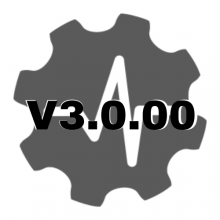Data Extraction
The ultimate solution to the Big Data Problem
With the increasing popularity of Distributed Acoustic Sensor (DAS) data, hundreds of hard-drives are flooded with unmanageable data. It cannot be processed, it cannot be loaded into a simple program, it can barely be viewed.
Part of ISP’s DFO System, SP2S can extract all the relevant information from raw DAS data with high-speed calculations and export it in time-indexed LAS format. The processed data size is 8,000 times smaller than the raw data: for the same data, instead of 15 hard-drives, just one 4GB USB drive is necessary. The LAS files can be imported in any compatible software for reviewing and analysis.
Vendor neutral
SP2S accepts any type of DAS data. Many vendor formats, both in-house original formats and HDF5 unified formats, are already part of SP2S. Our development team is always available to extend the importing capabilities of SP2S with additional formats. Multiple hard-drives can be processed simultaneously as SP2S will autonomously scan through the designated list of hard-drives to be processed.
Impressive data reduction
An average hydraulic fracturing monitoring day amounts to 30 TB of raw DAS data which can be stored on 10 to 15 hard-drives. Once processed by SP2S, the raw data on the hard-drives will still be there but SP2S will have exported only about 4 GB of processed data. All the same information, 8,000 times less space. SP2S is also designed to perform real-time monitoring in which case storage becomes unnecessary.
No data loss
SP2S performs a series of complex manipulations on the data to extract relevant information to cover a wide range of surveillance purpose. The data is normalized and the signal to noise ratio is optimized. The energy is extracted out of the signal and filtered in two ways: frequency banding (Energy Bands) and time window (Frequency Spectrum). The data processing is performed without losing any relevant information.






